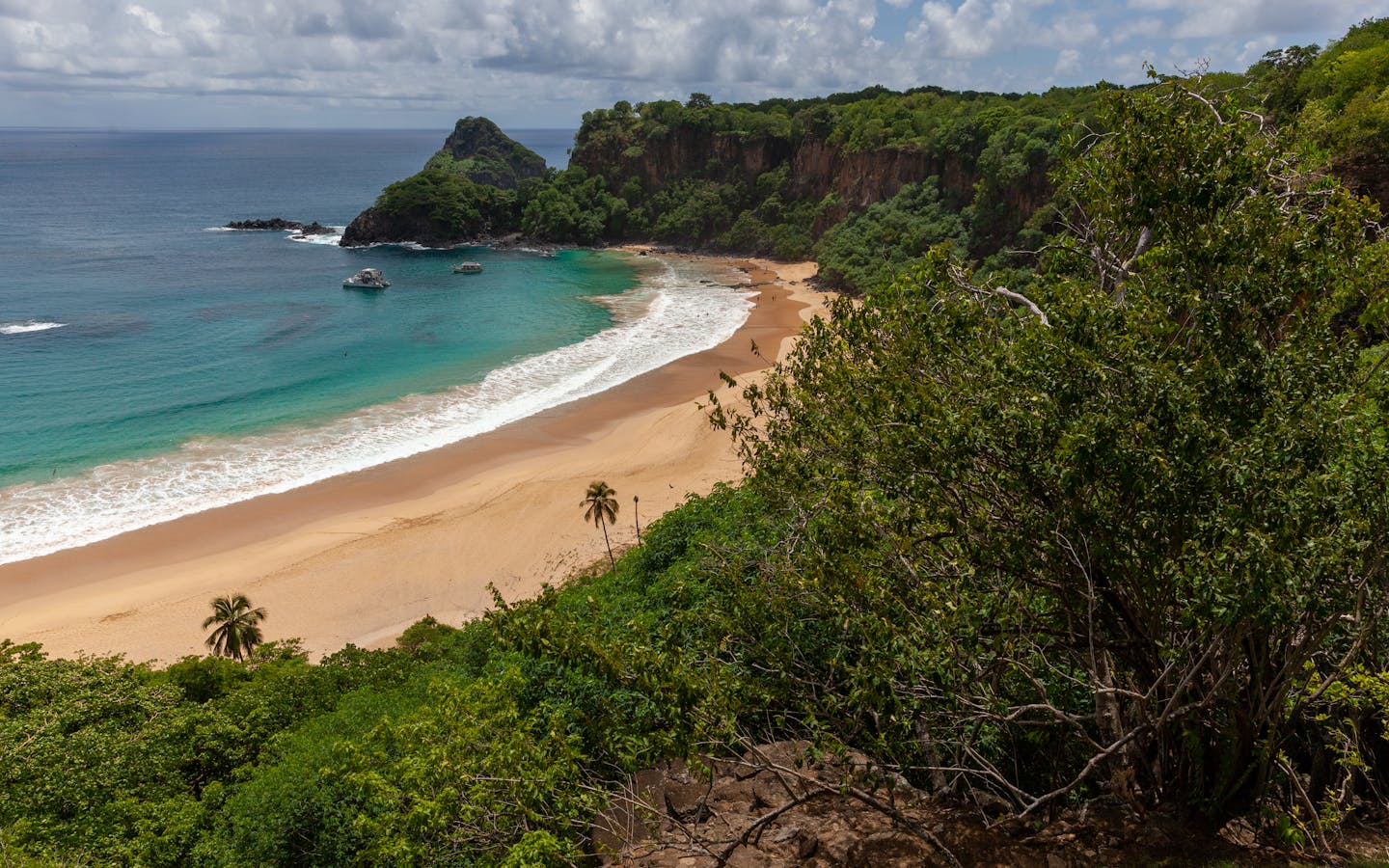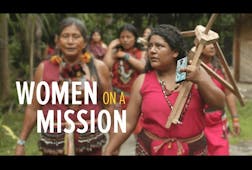Spanning two continents, the Americas region is home to vital landscapes and seascapes filled with natural treasures. Its vast freshwater resources, abundant biodiversity and carbon-rich ecosystems — including the Amazon forest — help mitigate the worst effects of climate change.
But the Americas face formidable challenges — deforestation, pollution, the destruction of habitats, overfishing and more — that threaten to undermine the health of the region's natural resources.
Conservation International is working throughout the Americas to restore critical ecosystems and protect nature — for the well-being of people around the world.
Where we work
Threats
Agriculture, extractive industries and urban expansion threaten forests throughout the Americas. About one million square kilometers (386,100 square miles) of Amazon rainforest have been destroyed since the 1970s.
The region's fish species and marine habitats are under increasing pressure from overfishing and poaching, which jeopardizes food security for those who depend on seafood as their main source of protein.
Delicate but vital ecosystems — like high-carbon mangrove forests and biologically diverse coral reefs — face collapse due to coastal development, agricultural runoff and climate change.
Our focus
Conservation International's work in the Americas began in Bolivia, where we completed our first debt-for-nature swap in 1988 — which allowed the country to switch out foreign debt for a promise to protect 1.6 million hectares (4 million acres) of tropical rainforest and the endangered species living within it. Since then, our focus has expanded to include a variety of innovative conservation efforts throughout the region, from upscaling restoration in the Brazilian Amazon to helping prevent illegal fishing in Costa Rica.
Today we have offices in nine countries in the Americas — Bolivia, Brazil, Colombia, Costa Rica, Ecuador, Guyana, Mexico, Peru and Suriname. With a multidisciplinary team we build partnerships with communities, governments and businesses — and remain committed to restoring forests, improving management of oceans and strengthening the protection of critical landscapes and seascapes throughout the Americas.
Our priorities
High-carbon ecosystems, such as tropical and mangrove forests, can be powerful allies in the fight against climate change. In the Americas, we're helping to mitigate the impacts of climate change by protecting millions of hectares of rainforests and coastal mangroves where carbon is safely locked away.
How we stabilize our climate by protecting and restoring nature »
Healthy oceans sustain life and help regulate climate. In the Americas, we're working to safeguard the seas by making fisheries more sustainable in the Abrolhos Seascape off the coast of Brazil and the Eastern Tropical Pacific Seascape. We also partner with Hawaiian communities to implement sustainable fishing practices and with local marine scientists to restore Costa Rica's coral reefs.
Part of ensuring the well-being of nature means finding ways to help local communities and businesses thrive. In the Americas, we promote conservation-based business practices. This includes securing commitments for deforestation-free supply chains in the Amazon and helping farmers in Mexico and Peru to implement sustainable agriculture techniques that support the health of forests and rivers.
On the ground
Our investment fund, CI Ventures, is providing financing to small businesses with big environmental solutions — and forging partnerships with commercial players who want to invest in conservation. In the Colombian Amazon, our loan enabled CorpoCampo, a family-owned company that sources açaí berries and hearts of palm, to upgrade its infrastructure and leverage larger investments from partners, creating an estimated 500 new full-time jobs. Learn more »
To meet the targets of the Paris Climate Agreement — and avoid climate catastrophe — more countries are looking to put a price on carbon emissions. Conservation International is working with the governments of Colombia, Ecuador and Peru to help establish carbon pricing systems that increase their investment in tropical forests and other high-carbon ecosystems. Learn more »
In Brazil's Abrolhos Seascape, Conservation International has facilitated the creation of three extractive reserves, where fishing is limited to local communities that use sustainable harvesting methods — ultimately protecting around 3,000 square kilometers (1,200 square miles). Learn more »
In Amazonia's most at-risk areas, we're working to protect pristine forests by advising on the establishment of new protected areas, expanding programs that incentivize forest protection through economic benefits and increasing access to climate financing for zero deforestation. Learn more »
Despite its protected status, Peru’s Alto Mayo had some of the country's highest deforestation rates. Now, conservation agreements in the Alto Mayo are supporting a new development model that has helped reduce deforestation by half, restore forests near Indigenous communities and improve the lives of more than a thousand families who are turning to sustainable farming techniques and other livelihoods that protect nature.
Indigenous peoples and local communities own at least a quarter of the Amazon — and their lands have lower rates of deforestation than many protected areas. Our Future Forests–Amazonia Verde, a Conservation International effort funded by the French Government and CI aims to conserve up to 12 percent of the Amazon — approximately 73 million hectares (180 million acres) directly and indirectly — by 2025 by building the capacity of 26 Indigenous groups across Bolivia, Brazil, Colombia, Ecuador, Guyana, Peru and Suriname. It will also pioneer new financial mechanisms to advance conservation investments and incentives. Learn more »
Conservation International is working in Costa Rica's Gulf of Nicoya to protect the diverse mangrove ecosystem that provides a vital habitat for fisheries, income for more than 6,000 fishermen and food for nearby communities. Over 350 hectares (864 acres) of mangroves are under ecological restoration with the collaboration of communities, local companies and national institutions.
Since 2004, we’ve supported the creation or expansion of more than 20 marine protected areas in the Eastern Tropical Pacific Seascape. And we’re working around the region to restore critical coastal areas, end destructive fishing practices and coordinate cooperation among the region's governments to create a more sustainable Pacific Ocean. Learn more »
In Mexico, Conservation International works with local partners and Indigenous communities to ensure biodiversity conservation and sustainable management of terrestrial, coastal and marine ecosystems that provide food, water and climate resilience.
Watch how we work
Watch how we work
Conservation news from the Americas
Press releases from the Americas
Our offices in the Americas
-
Bolivia (Español)
© Trond Larsen -
Brazil (Português)
© Adriano Gambarini -
Colombia (Español)
© Flavio Forner -
Costa Rica (Español)
© Will Turner -
Ecuador (Español)
-
Mexico (Español)
© Jurgen Hoth -
Peru (Español)
© Thomas Muller -
Suriname (English)
© Kyle Obermann











